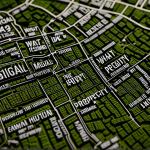Overview of Green Finance Principles
Green finance principles revolve around the integration of environmental considerations into financial decision-making. At their core, these principles promote investments that lead to environmental sustainability while prioritizing social and economic development. The key components of green finance include funding mechanisms like green bonds, eco-loans, and sustainable investment funds, which are designed to reduce carbon footprints and spur eco-friendly innovations.
In recent years, the significance of sustainable finance has escalated, serving as a pivotal approach to tackling the growing threat of climate change. It draws attention to the responsibility of the financial sector in supporting projects that enhance environmental well-being. Sustainable financial practices not only mitigate ecological impacts but also open up economic opportunities by fostering innovation in green technologies.
Also to read : What are the benefits of investing in regional UK real estate markets?
When it comes to real estate, green finance plays a transformative role by funding projects that meet environmental standards. This support extends to the development of energy-efficient buildings and the adoption of renewable energy sources. In doing so, green finance aids developers in achieving regulatory compliance and improves property value through sustainable design features.
Understanding these principles and their applications can guide stakeholders in recognizing the vast potential of incorporating environmental sustainability into financial strategies, further cementing the fundamental role of finance in building a sustainable future.
Also read : How can investors navigate UK real estate market fluctuations?
Relevant UK Policies Supporting Green Finance
The UK government has been proactive in establishing initiatives that promote green finance, particularly within the realm of real estate. One notable policy is the Green Finance Strategy, which aims to align private sector financial flows with clean, sustainable, and resilient growth. This strategy encourages investments in green infrastructure and technologies, emphasizing the importance of sustainable construction practices and energy-efficient buildings.
Regulatory frameworks also play a crucial role in advancing sustainable investments. For instance, the UK’s Task Force for Climate-related Financial Disclosures (TCFD) is pivotal in compelling companies to report on climate-related risks and opportunities. This transparency helps maintain investor confidence, ensuring that market dynamics favor environmentally responsible practices. Such frameworks contribute to a robust and trustworthy sustainable finance ecosystem, encouraging both developers and investors to make informed, eco-conscious choices.
Moreover, these policies have a significant impact on investor confidence, as they signal governmental support for environmental sustainability within the financial sector. This support not only attracts more investors to the market but also propels the UK to the forefront of sustainable development, setting a standard for other nations to follow. With these initiatives and regulations, the UK continues to cement its role as a leader in the integration of green finance within real estate.
Case Studies of Successful Implementation
In exploring the transformative potential of green finance, several UK real estate examples stand out, demonstrating successful implementations and setting the blueprint for future projects. One notable case is the pioneering work in London’s King’s Cross regeneration project. This development has incorporated sustainable development with a focus on energy-efficient buildings, extensive green spaces, and the use of renewable energy sources. By leveraging green finance instruments, the project not only met environmental standards but also enhanced property value and tenant satisfaction.
Another stellar instance is the multi-use development at The Edge in Amsterdam, which, although not in the UK, serves as an inspirational benchmark for sustainability worldwide. It boasts a remarkable achievement as one of the world’s most sustainable office buildings. This serves as an indirect lesson in how similar strategies can be applied to green finance case studies within the UK.
These projects have underscored several key lessons learned for future endeavors. They highlight the importance of early stakeholder engagement and robust planning to integrate sustainable development principles effectively. Furthermore, by adopting transparent reporting practices and incorporating innovative green technologies, such initiatives have successfully attracted investments and facilitated community support.
These case studies illustrate the rewarding outcomes from adhering to green finance principles, paving the way for sustainable growth in the real estate sector. They offer a rich tapestry of insight from which future projects can draw, ensuring continued momentum in embracing environmentally conscious financial strategies.
Expert Opinions on Green Finance Impact
In the ever-evolving landscape of real estate, insights from industry experts are invaluable in understanding the transformative potential of green finance. Experts emphasize that integrating sustainability into real estate valuation is not just an environmental necessity but a financial imperative. As these strategies become embedded into homes and buildings, they are likely to reshape market dynamics substantially.
Green finance experts underline the role of eco-friendly practices in enhancing property value. Properties that incorporate sustainable features tend to attract higher investment and demand, leading to a positive cycle of growth. This change is spurred by the increasing awareness among stakeholders of the long-term economic benefits intertwined with environmental stewardship.
The future of green finance is projected to be vibrant within the UK real estate market. Experts foresee a continued emphasis on renewable energy adoption, which promises to revolutionize traditional building and construction norms. The rise of smart technologies—used in sustainable projects—illustrates a burgeoning trend where green finance is integral to creating resilient and adaptable communities.
Engaging with leading voices within this domain provides clarity on the practicalities of implementing innovative solutions. As the industry pivots towards more sustainable development, the collective insights of these experts serve as a crucial guide for navigating the evolving economic and environmental terrain.
Practical Applications for Real Estate Professionals
Incorporating green finance into real estate strategies requires proactive actionable strategies from professionals to maximize its benefits. Real estate professionals are advised to integrate sustainable finance by prioritizing projects with eco-friendly features, thus boosting property value and appeal.
Investment decisions should consider green financing tools such as eco-loans and green bonds, which are designed to support environmental objectives. These financial instruments make it feasible for developers to adopt sustainable practices, thus meeting regulatory standards and fostering innovation.
To effectively utilize these tools, professionals must engage in a sustainable planning process that includes assessing environmental risks and opportunities. Developing real estate sustainability plans ensures properties not only meet current standards but are also adaptable to future sustainability norms.
Collaboration is key in this context. The importance of collaboration between stakeholders cannot be overstressed, as it enhances the formulation and implementation of sustainable strategies. Stakeholders include environmental experts, investors, regulators, and architects, all essential in promoting sustainable development. By working together, they can overcome challenges and drive the successful integration of green finance in property development endeavors.
Future Trends and Challenges in Green Finance
As the urgency to address climate change intensifies, the future of green finance within the real estate sector emerges with several fascinating trends and challenges. A significant trend is the increasing integration of sustainability within real estate projects, driven by advancements in green technologies. The adoption of smart buildings with energy-efficient systems and sustainable materials is projected to grow, aligning with environmental and economic objectives.
However, there are notable challenges in sustainability that the real estate sector must navigate. One such challenge is the upfront cost associated with implementing sustainable practices. While there is long-term economic gain, initial investment hurdles may deter developers. Additionally, keeping up with fast-evolving regulations and ensuring compliance presents a continuous obstacle for stakeholders aiming to adopt green finance.
Emerging trends in real estate also highlight a growing emphasis on data-driven decision-making. This involves leveraging technological tools for detailed analysis of environmental impacts and optimization of building operations. Such innovations promise to enhance transparency and efficacy in implementing sustainable strategies.
For the future of green finance, predictions suggest it will play an increasingly pivotal role in enabling real estate sustainability. A shift toward holistic approaches, combining financial innovation with sustainable development goals, will be crucial. The overarching impact will be real estate developments that not only meet present ecological standards but are adaptable to future sustainability challenges, positioning the UK at the forefront of this transformative movement.










